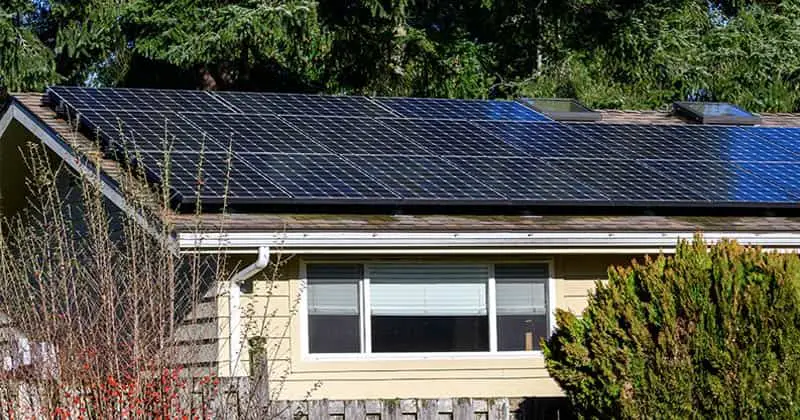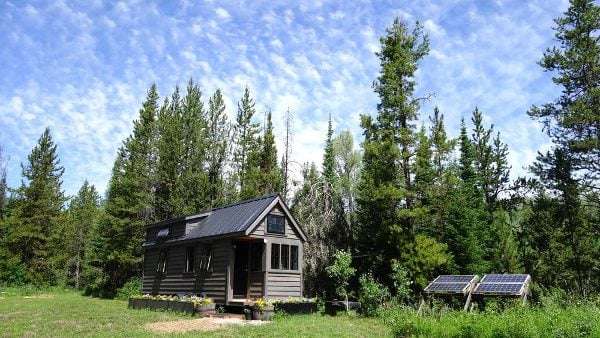Living off the grid can be a rewarding experience, but it also comes with its own set of challenges. One of the primary concerns for those choosing an off-grid lifestyle is how to keep their homes warm during the colder months. With no access to traditional power sources, off-gridders have to devise innovative and sustainable methods to stay warm. In this article, I will explore the different strategies that off-gridders employ to ensure their homes remain cozy and comfortable, even without the convenience of a conventional heating system. From harnessing solar energy to utilizing wood-burning stoves, join me as we uncover the secrets of staying warm off the grid.
Insulation
Types of insulation materials
When it comes to keeping our homes warm, insulation plays a crucial role. There are various types of insulation materials available that can effectively prevent heat loss and ensure a comfortable indoor environment. Some common types of insulation materials include fiberglass, cellulose, spray foam, and rigid foam.
Fiberglass insulation is one of the most widely used options. It consists of fine glass fibers that are woven together to create a blanket-like material. Cellulose insulation, on the other hand, is made from recycled paper fibers and provides excellent thermal insulation properties. Spray foam insulation is a popular choice for its ability to seal gaps and cracks, while rigid foam insulation is known for its durability and resistance to moisture.
Importance of proper insulation
Proper insulation is essential for maintaining a warm and energy-efficient home. Without adequate insulation, heat can easily escape through walls, ceilings, floors, and even doors and windows. This can result in higher energy bills, as the heating system needs to work harder to compensate for the heat loss.
By installing proper insulation, you can significantly reduce heat transfer, keeping your home warm and comfortable while minimizing energy consumption. Additionally, insulation can also help in reducing noise transmission and improving indoor air quality by preventing drafts and condensation.
DIY insulation techniques
Insulating your home doesn’t always have to be a costly affair. There are various do-it-yourself (DIY) insulation techniques that you can employ to improve the energy efficiency of your home.
One popular DIY insulation technique is using weatherstripping to seal gaps around doors and windows. Weatherstripping is a simple and affordable way to prevent drafts, keeping cold air out and warm air in. Another option is adding insulation to your attic. This can be done using rolls or batts of insulation, which can easily be installed by following the manufacturer’s instructions.
For those looking for a more eco-friendly approach, recycled materials such as old blankets or newspapers can be used to insulate drafty areas. These materials can be placed in wall cavities or attics to provide additional insulation.
Passive Solar Heating
What is passive solar heating?
Passive solar heating is a technique that harnesses the energy from the sun to naturally heat a home without the need for mechanical systems. It utilizes the design and orientation of the building to maximize the solar heat gain during the winter months and minimize it during the summer months.
Passive solar heating systems typically include features such as large south-facing windows, thermal mass materials, and window overhangs. These elements work together to make the most of the sun’s energy, capturing and storing heat during the day and releasing it slowly at night.
Designing homes for passive solar heating
Designing a home for passive solar heating involves careful consideration of its layout and orientation. The main principle is to maximize the exposure of the building to the sun’s rays during the winter months when heating is required, while minimizing exposure during the summer months to prevent overheating.
The ideal orientation for a passive solar home is to have the long side facing south, with large windows on the southern side to allow maximum sunlight penetration. The strategic placement of thermal mass materials, such as concrete or tile floors, can help absorb and store the sun’s heat, releasing it gradually as the indoor temperature drops.
It’s also important to consider the size and placement of windows, as well as the use of window coverings to control the amount of heat entering the building. Insulated curtains or blinds can be used to trap heat inside during nighttime or when the sun’s intensity is high.
Maximizing sunlight exposure
To maximize the sunlight exposure for passive solar heating, it’s crucial to keep windows and other glazing clean and free from obstructions. Regular cleaning of windows and removing any obstacles, such as overgrown trees or shrubs, will ensure that the maximum amount of sunlight can enter the home.
During the winter months, it’s essential to open curtains or blinds during the day to allow sunlight to penetrate and warm the interior. Additionally, utilizing reflective surfaces, such as light-colored walls or flooring, can help bounce and distribute sunlight throughout the space.
By optimizing sunlight exposure through the principles of passive solar heating, home occupants can enjoy a warmer and more energy-efficient living environment.
Wood-Burning Stoves and Fireplaces
Types of wood-burning stoves
Wood-burning stoves have been used for centuries as a reliable source of heat. There are various types of wood-burning stoves available, each with its own design and heating capabilities.
Traditional wood-burning stoves are made of cast iron or steel and feature a firebox where wood logs are burned. These stoves radiate heat into the surrounding area, providing warmth to the room. Another type is a pellet stove, which uses compressed sawdust pellets and offers more automated control over combustion and heat output.
For those looking for a more decorative option, ornate wood-burning fireplaces can be installed. These fireplaces not only provide heat but also add a cozy and inviting atmosphere to the living space.
Efficient use of wood-burning stoves
To maximize the efficiency of wood-burning stoves, it’s important to follow some guidelines. Firstly, it’s crucial to ensure that the stove is properly installed and maintained. Regular cleaning of the flue and chimney is necessary to remove creosote buildup, which can cause chimney fires.
Using properly seasoned firewood is also essential. Wet or unseasoned wood contains high levels of moisture, which reduces its energy content and produces more smoke. Dry, seasoned firewood, on the other hand, burns cleaner and produces more heat.
It’s also essential to operate the stove with the right air controls. This usually involves adjusting the air intake to regulate the combustion process and maintain a steady and efficient burn.
Safety considerations
While wood-burning stoves and fireplaces can provide efficient heat, it’s important to prioritize safety. It’s crucial to install a proper chimney, flue, and ventilation system to prevent the buildup of smoke and harmful gases, such as carbon monoxide, indoors.
Regular inspection of the stove or fireplace, including the seals and gaskets, is necessary to ensure they are intact and not leaking any dangerous gases. Installing smoke detectors and carbon monoxide alarms in the home is also highly recommended for early detection of any potential hazards.
In addition, proper handling and storage of firewood are crucial. Storing firewood away from the house and ensuring it is dry before burning can minimize the risk of accidental fires.
By following safety guidelines and implementing appropriate maintenance practices, wood-burning stoves and fireplaces can provide efficient and cozy heat for off-grid homes.
Pellet Stoves
How do pellet stoves work?
Pellet stoves are a popular alternative to traditional wood-burning stoves. They use small, compressed wood pellets as fuel, which are fed automatically into the combustion chamber through an auger system. The pellets are ignited and burned, producing heat that is distributed into the room through a fan or convection system.
One of the advantages of pellet stoves is their high efficiency and precise control over combustion. Many pellet stoves are equipped with programmable thermostats, allowing users to set the desired temperature and have the stove automatically adjust its burn rate to achieve that temperature.
Advantages of using pellet stoves
There are several advantages to using pellet stoves for heating off-grid homes. Firstly, pellet stoves are highly efficient and clean-burning. The compressed wood pellets have a low moisture content, which means they burn more efficiently and produce less smoke and ash compared to traditional firewood.
Pellet stoves also offer convenience and ease of use. The automatic feed system eliminates the need for constant refueling. A hopper can be filled with pellets, which can last for several days, depending on the stove’s size and heat output. This makes pellet stoves a convenient option for individuals seeking a low-maintenance heating solution.
Additionally, pellet stoves are considered a more environmentally friendly heating option. The pellets are made from renewable biomass materials, such as sawdust or wood chips, which would otherwise be discarded as waste. By using these materials as a heating source, pellet stoves contribute to reducing greenhouse gas emissions.
Proper maintenance of pellet stoves
To ensure the efficient and safe operation of pellet stoves, regular maintenance is necessary. It’s important to clean the stove, including the burn pot, ashpan, and venting system, on a regular basis to avoid any obstructions that may hinder proper combustion or venting.
Inspecting and cleaning the exhaust vent, chimney, and flue pipes is also crucial to prevent the buildup of creosote and potential chimney fires. Many pellet stoves are equipped with self-cleaning features, but it’s still recommended to conduct periodic visual inspections to ensure their effectiveness.
Regularly checking and cleaning the hopper and auger mechanism is necessary to keep the feed system functioning properly. It’s also important to use high-quality pellets, as lower-quality pellets may contain more impurities, which can affect the stove’s performance and require more frequent cleaning.
By following proper maintenance practices, pellet stoves can provide an efficient and convenient heating solution for off-grid homes.
Solar Heating Systems
Types of solar heating systems
Solar heating systems utilize the power of the sun to provide heat for off-grid homes. There are several types of solar heating systems available, each utilizing different technologies to capture and convert solar energy into usable heat.
One common type is a solar water heating system, which uses solar collectors to heat water for domestic use or space heating. These systems typically consist of solar panels or evacuated tubes that absorb sunlight and transfer the heat to water circulating through them.
Another type is a solar air heating system, which uses solar collectors to heat air directly. The heated air can then be circulated through ducts to provide space heating or ventilation.
Installation and maintenance of solar heating systems
Proper installation is crucial to ensure the optimal performance and efficiency of solar heating systems. Solar collectors should be strategically placed to receive maximum sunlight, typically facing south or at an optimal tilt angle.
Regular maintenance of solar heating systems is also important to ensure their longevity and efficiency. Cleaning the solar panels or evacuated tubes periodically is necessary to remove any dirt or debris that can reduce their effectiveness in absorbing sunlight.
Checking the system’s components, such as pumps, valves, and insulation, is necessary to ensure they are functioning properly. It’s also important to inspect the system’s fluid levels and pressure to ensure proper operation.
Maximizing efficiency of solar heating systems
To maximize the efficiency of solar heating systems, it’s important to consider additional factors beyond installation and maintenance. These include optimizing the use of solar energy and ensuring proper insulation and thermal retention within the home.
One way to optimize solar energy utilization is by using solar controllers or intelligent controls that can automatically adjust the system’s operation based on weather conditions and energy demands.
Proper insulation of the home is crucial to minimize heat loss and maximize the benefits of solar heating. Insulating walls, floors, and roofs, as well as using energy-efficient windows and doors, can help maintain a comfortable indoor temperature and reduce the reliance on additional heating methods.
Lastly, utilizing thermal mass materials within the home can help store and release heat slowly, reducing temperature fluctuations and enhancing the overall efficiency of the solar heating system.
By considering these factors, off-grid homeowners can fully leverage the benefits of solar heating systems and achieve a sustainable and efficient heating solution.
Geothermal Heating
What is geothermal heating?
Geothermal heating is a renewable energy technology that harnesses the constant temperature of the earth’s subsurface to provide heating for homes. It works by utilizing a geothermal heat pump system to capture heat from the ground and transfer it to the indoor space.
The earth’s subsurface maintains a relatively constant temperature, usually around 50 to 60 degrees Fahrenheit, regardless of the season or weather conditions. Geothermal heat pumps capitalize on this stable heat source to warm the home during the winter months.
Geothermal heating systems and components
Geothermal heating systems consist of three main components: the heat pump, ground heat exchanger, and distribution system. The heat pump is responsible for extracting heat from the ground and transferring it to the indoor space.
The ground heat exchanger consists of a series of pipes, known as ground loops, that are buried underground. These loops contain a fluid that picks up heat from the ground and transports it to the heat pump.
The distribution system, which can be either forced air or radiant floor heating, is responsible for delivering the heated air or water to different parts of the home.
Benefits and considerations of geothermal heating
Geothermal heating offers several benefits for off-grid homes. Firstly, it is a renewable and sustainable energy source, as it relies on the constant and natural heat stored in the earth’s subsurface. By harnessing this energy, homeowners can reduce their carbon footprint and minimize reliance on fossil fuels for heating.
Geothermal heating systems also provide efficient and consistent heating throughout the year. The stable temperature of the ground ensures that the heat pump doesn’t have to work as hard compared to conventional heating systems, resulting in energy savings and lower utility bills.
However, geothermal heating systems do require a significant upfront investment for installation. The cost of drilling or digging the ground loops can be expensive, making it necessary to carefully evaluate the long-term energy and cost savings before deciding to install a geothermal heating system.
Overall, geothermal heating offers a sustainable and efficient heating option for off-grid homes, with the potential for long-term energy savings and reduced environmental impact.
Passive Heating Techniques
Thermal mass and heat retention
Passive heating techniques utilize the inherent properties of materials and design elements to absorb, store, and release heat without the need for mechanical systems. One key aspect of passive heating is the use of thermal mass materials in the construction of the home.
Thermal mass refers to materials that have the ability to absorb and store heat energy. Common examples include concrete, brick, stone, or earthen materials. These materials absorb heat during the day when exposed to sunlight or artificial heating sources and release it slowly at night when the temperature drops.
By incorporating thermal mass materials into the construction of walls, floors, or even furniture, the home can benefit from a steady release of stored heat, helping to regulate indoor temperatures and reduce energy consumption.
Insulated curtains and window covers
Insulated curtains and window covers are simple yet effective solutions for passive heating. They help to minimize heat loss through windows, which are commonly considered weak points for thermal insulation.
Insulated curtains are designed with multiple layers of fabric, including an insulating layer in between. This extra layer helps to trap warm air near the window, preventing it from escaping to the colder outside environment. Similarly, window covers, such as thermal blinds or cellular shades, provide an additional barrier against heat loss and can be adjusted to control the amount of sunlight entering the room.
Using insulated curtains or window covers can significantly reduce heat loss during colder months, keeping the warm air inside and improving energy efficiency.
Body heat utilization
One overlooked source of heat in a home is the body heat generated by its occupants. While the contribution of body heat alone may not be significant, it can complement other heating methods in creating a comfortable living environment.
Placing furniture, such as couches or beds, against interior walls or thermal mass materials can help absorb and retain some of the body heat. This allows the furniture to act as a thermal mass, releasing the stored heat slowly and warming up the room.
Open floor plans also facilitate the natural circulation of warm air generated by occupants, distributing heat more evenly throughout the home.
By incorporating passive heating techniques that utilize thermal mass, insulation, and body heat, off-grid homeowners can reduce their reliance on active heating methods and increase the overall energy efficiency of their homes.
Radiant Floor Heating
How does radiant floor heating work?
Radiant floor heating is a type of heating system that utilizes a network of tubes or electric heating elements installed beneath the floor to radiate heat into the room. The heat is transferred directly to the floor surface, which then radiates the warmth upward, providing a comfortable and even heat distribution.
There are two main types of radiant floor heating: hydronic and electric. Hydronic systems use hot water flowing through the tubes, while electric systems utilize electric resistance cables or heating mats.
Installation and types of radiant floor heating
Installation of radiant floor heating typically involves placing the heating system beneath the floor surface. This can be done during the construction phase of a new home or retrofitting an existing home.
Hydronic radiant floor heating systems require a boiler or water heater to heat the water, which is then circulated through the tubes embedded in the floor. Electric radiant floor heating systems, on the other hand, involve the installation of electric heating cables or mats directly beneath the flooring.
Both systems can be controlled by a thermostat, allowing users to adjust the temperature and schedule heating cycles.
Pros and cons of radiant floor heating
Radiant floor heating offers several advantages for off-grid homes. Firstly, it provides efficient and effective heating, as the heat is radiated from the floor upwards, resulting in even heat distribution and increased comfort. This type of heating is also silent, as there are no fans or moving parts, making it a suitable option for noise-sensitive individuals.
Radiant floor heating can also save energy by utilizing lower water temperatures or electric power compared to traditional heating methods.
However, radiant floor heating systems can be costly to install, especially in existing homes that require retrofitting. The installation process can also be time-consuming and disruptive, as it involves digging or removing existing flooring materials.
It’s important to consider the specific needs of the home and evaluate the costs and benefits before deciding to install radiant floor heating.
Heat Pumps
Air-source heat pumps
Air-source heat pumps are a popular heating option for off-grid homes. They work by transferring heat from the outdoor air to the indoor space through a refrigeration cycle. The heat pump extracts heat from the outdoor air and increases its temperature before distributing it inside the home.
Air-source heat pumps can provide both heating and cooling capabilities, making them versatile for year-round use. They are energy-efficient, as they transfer heat rather than generate it, resulting in significant energy savings compared to traditional heating systems.
Ground-source (geothermal) heat pumps
Ground-source heat pumps, also known as geothermal heat pumps, utilize the constant temperature of the earth’s subsurface to provide heating for off-grid homes. These systems work by extracting heat from the ground through a series of buried pipes or loops and transferring it to the indoor space.
Ground-source heat pumps are highly efficient, as they can deliver up to four units of heat for every unit of electricity consumed. They provide consistent and reliable heating throughout the year, regardless of external weather conditions.
While the installation cost of ground-source heat pumps can be higher compared to other heating methods, they offer long-term energy savings and reduced environmental impact.
Hybrid heat pumps
Hybrid heat pumps combine the benefits of air-source and ground-source heat pumps to provide efficient heating and cooling for off-grid homes. These systems have the flexibility to switch between air and ground sources depending on the external conditions and demand.
Hybrid heat pumps can automatically optimize the heat source based on factors such as outdoor temperature, electricity rates, and the system’s efficiency. This allows homeowners to maximize energy savings by utilizing the most efficient heat source at any given time.
By utilizing heat pumps, off-grid homeowners can benefit from high energy efficiency and reduced reliance on fossil fuels for heating, contributing to a more sustainable and eco-friendly living environment.
Combining Multiple Heating Methods
Introducing hybrid heating systems
Combining multiple heating methods can be a strategic approach for off-grid homeowners to maximize the advantages of various systems and achieve optimal heating efficiency.
Hybrid heating systems typically involve integrating two or more heating sources, such as a wood-burning stove, solar heating system, or heat pump, to work together and complement each other’s functionality. The different heating methods can be selected based on their availability, efficiency, and cost-effectiveness.
Integrating multiple heating methods provides resilience and flexibility, as homeowners can switch between different sources depending on their energy needs, weather conditions, or even fuel availability. By using a hybrid heating system, off-grid homeowners can ensure a reliable and sustainable heating solution throughout the year.
Synergistic advantages of combining methods
Combining different heating methods can offer synergistic advantages that individual systems may not provide on their own. For example, solar heating systems can harness the sun’s energy during the day, while a wood-burning stove can provide heat during the night or on cloudy days.
By integrating these two systems, off-grid homeowners can optimize their energy usage and reduce reliance on backup generators or additional fuel sources. This not only promotes energy efficiency but also helps to lower utility bills and carbon emissions.
Furthermore, combining systems that utilize renewable energy sources, such as solar or geothermal, with traditional heating methods can ensure a resilient heating solution, even during periods of low sunlight or extreme weather conditions.
Design considerations for efficient hybrid systems
Design considerations are crucial when implementing a hybrid heating system in off-grid homes. Proper system integration, control mechanisms, and distribution methods are essential for maximizing efficiency and achieving optimal comfort.
Careful planning is required to ensure the compatibility and effective functioning of each heating method within the hybrid system. The system should also be designed to allow easy monitoring and control, allowing homeowners to optimize energy usage, switch between heating methods, or adjust settings based on their preferences and energy requirements.
Proper distribution of heat is another important aspect to consider. The integration of thermal mass materials, such as concrete floors or stone walls, can help store and release heat from different sources, ensuring a consistent and comfortable indoor temperature.
By considering both the compatibility and efficiency of different heating methods, off-grid homeowners can design and implement a hybrid heating system that offers optimal energy performance and comfort.
In conclusion, off-grid homeowners have a range of options when it comes to keeping their homes warm. From insulation and passive solar heating to wood-burning stoves, pellet stoves, and various heating systems, each method has its own advantages and considerations. By employing a combination of heating methods and implementing efficient design and maintenance practices, off-grid homeowners can create a cozy and sustainable living environment while minimizing energy consumption and reducing their environmental impact.




